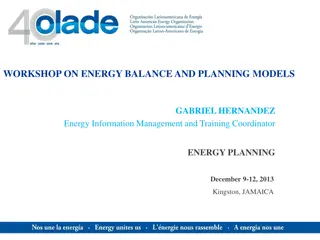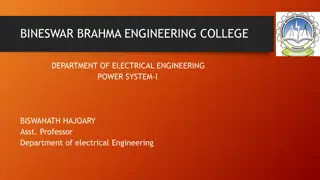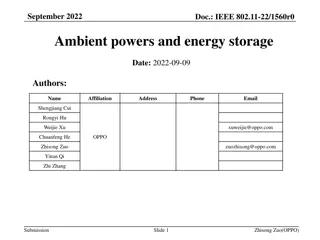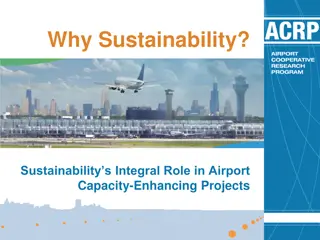Economically Responsible Power Pooling for Energy Sustainability
The discussion revolves around working together to responsibly manage and economically sustain power supply. The meeting addresses various action items for the CPPTF, including deliverability study review and discussing load deliverability components. The approach involves studies like NEDTF CRIS Transition Study and production study for maintaining CRIS deliverability. Additionally, the scope encompasses ensuring delivery of generating facility output within Transmission Provider's system and providing deliverability to loads within the same area.
Download Presentation

Please find below an Image/Link to download the presentation.
The content on the website is provided AS IS for your information and personal use only. It may not be sold, licensed, or shared on other websites without obtaining consent from the author.If you encounter any issues during the download, it is possible that the publisher has removed the file from their server.
You are allowed to download the files provided on this website for personal or commercial use, subject to the condition that they are used lawfully. All files are the property of their respective owners.
The content on the website is provided AS IS for your information and personal use only. It may not be sold, licensed, or shared on other websites without obtaining consent from the author.
E N D
Presentation Transcript
CNAT WORKING DISCUSSION CPPTF 4/6/2023 Working together to responsibly and economically keep the lights on today and in the future. SPPorg southwest-power-pool SouthwestPowerPool
PREVIOUS MEETING ACTION ITEMS As CPPTF takes on DSC responsibilities, invite consultant to CPPTF meeting for deliverability study review Build out example of flowgate constraint (Option 2B) dispatch flow High level list of differences in current approach vs proposed CPP approach for CRIS Discuss load deliverability component of CRIS 2
DELIVERABILITY APPROACHES NEDTF CRIS Transition Study (Underway) For each NITSA, determine the First Contingency Incremental Transfer Capability (FCITC) for a simulated transfer from the Existing Eligible Generator (EEG) being tested to the incremental resource(s) designated to serve the NITSA s load up to the maximum possible CRIS Deliverability amount for that EEG. Use a 3% TDF threshold. NEDTF CRIS Production Study (TBD) CRIS Deliverability: Amount of real power in megawatts that can be reliably transmitted from a CRIS generator to any load located within the same Deliverability Area NETDF Maintaining CRIS Deliverability (TBD) Maintaining CRIS deliverability in the transmission planning process for the life of the interconnected generator s interconnection agreement, as referenced in the excerpted paragraphs below Deliverability Assessment (Resource Adequacy) Utilizes MPM model Group dispatch based on 25% TDF impact on common constraints 3
DELIVERABILITY SCOPE Transition Study CPP CRIS CPP ERIS Ensure delivery of the Generating Facility's electric output using the existing firm or non-firm capacity of the Transmission Provider s Transmission System on an as available basis CPP Energy (e.g. MPM) or Capacity (e.g. ITP BR fuel type) Model Identify deliverability of existing EEG to loads located within the same deliverability area (NITSA load for EEGs that are DNRs). May produce Network Upgrades Provide deliverability to loads located within the same deliverability area by customer elected conversion to long term firm service without additional studies Purpose Base Model Dispatch CPP Energy (e.g. MPM) or Capacity (e.g. ITP BR fuel type) Model Based on BR methodology utilizing TS models 5
DELIVERABILITY SCOPE Study Model Transition Study CPP CRIS Gen: Single CRIS EEG + Impacting CRIS GENs Load: Scale to all NITSA in same DA Customer election of NITSA? Load Deliverability? Gen: Group current study CRIS into sub-regions or regions for Load: Scale to all NITSA in same DA CPP ERIS Gen: Single ERIS EEG + Impacting ERIS GENs Load: SPP footprint Powerflow Dispatch Gen: Single EEG Load: NITSA in same DA Gen: Group current study ERIS into sub-regions or regions for Load: Scale to all NITSA in same DA Dynamic Dispatch None Short Circuit Dispatch None Same as CPP CRIS dynamic Same as CPP ERIS dynamic 6
DELIVERABILITY SCOPE Transition Study CPP CRIS Powerflow: Contingencies similar to today s ITP, TPL, and GI assessments Dynamics: Contingencies similar to today s GI assessments (selection based on n levels of buses from POI) Short Circuit: 3 phase faults CPP ERIS Powerflow: Contingencies similar to today s ITP, TPL, and GI assessments Dynamics: Contingencies similar to today s GI assessments (selection based on n levels of buses from POI) Short Circuit: 3 phase faults Powerflow: FCITC analysis of each EEG Dynamics: none Short Circuit: none Assessment Inclusion of impacting gens Transmission constraint identification 25% 25% 25% Based on HITT T1 ERIS threshold study? 3% 3% 7
CRIS PRODUCTION METHODOLOGY (CPP) IN DA 4 1 2 4 2 3,5 2 2 8
CRIS PRODUCTION METHODOLOGY (CPP) OUT DA (AGGREGATE STUDY) 9























